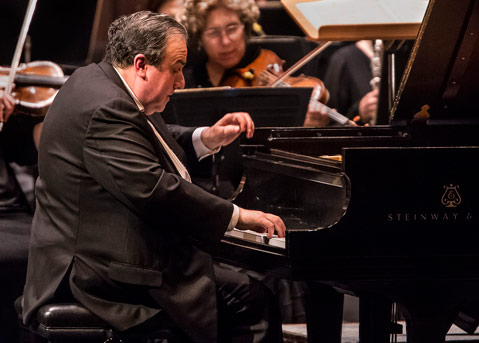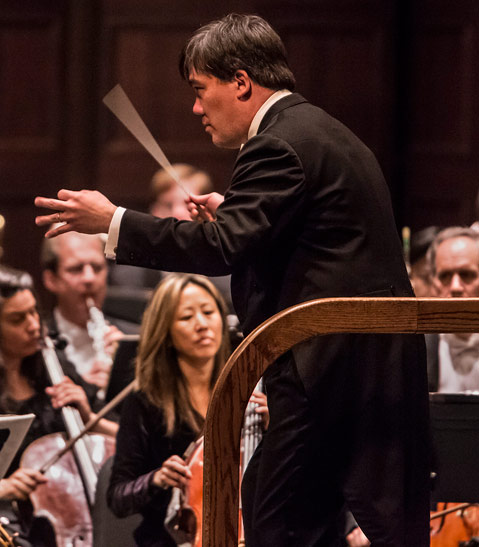New York Philharmonic
CAMA’s Season Finale with the New York Philharmonic

CAMA concluded its 93rd season Thursday, hosting the New York Philharmonic on a Santa Barbara stopover as the big orchestra from the Big Apple spent a week concertizing in California. The Granada Theatre performance was packed with enthusiasts gushing a warm Santa Barbara welcome to an orchestra that hasn’t tooted or fiddled in our enclave of red tile and palm trees for 43 years. The United States’ oldest symphony orchestra (1842) boasts a roster of nearly 100 musicians, most of whom were onstage Thursday. Thunderous eruptions of triple forte not only happily tested the Granada’s reverb capability but cleared a few ceiling cobwebs, too, I am sure.

The youthful Alan Gilbert is a virile force at the podium. He conducts with the expressive physicality of a dancer giving shape to emerging ideas. Energy was in no short supply at this concert, which began and ended in blaring brass and cymbal crash. The music bounded out of the gate in the festive gallop of Antonín Dvořák’s Carnival (1891). This was an especially appropriate piece for the New York ensemble, as the Czech composer completed it shortly before moving from Prague to N.Y.C. and conducted Carnival at his debut performance in Carnegie Hall.
Pianist Yefim Bronfman was featured in Beethoven’s Piano Concerto No. 3 in C Minor (1796-1803). Labored over for a series of years as Beethoven was reaching his thirties, this work carries the classical impress of Mozart and Haydn. Generally placed by music scholars at the beginning of Beethoven’s “middle period,” it does not express the muscularity and originality of, say, Symphony No. 3, the “Eroica.” Bronfman gave a safe performance in a piece where dialogue between soloist and ensemble more easily drifts to concord than contest.
Pyotr Ilyich Tchaikovsky’s Symphony No. 4 in F Minor (1877) was the sole work performed in the second half of the concert, and it was a sumptuous feast for the ear and the imagination. All the virtues of a large orchestra were exploited here, drawing extensively on woodwinds, brass, and percussion in stark contrasts of mood and texture. The “Fate” fanfare begins and ends the work (expressing the invincible force that ultimately disturbs all happiness, according to Tchaikovsky’s letter to his patroness), while recapitulations mark the transitions of the first movement. The glories of the N.Y. Phil’s 15-piece brass section were displayed here; the bass trombone rattled my sternum before reaching the ear. The “Scherzo” movement is distinct for its rhythmic delicacy, with all of the strings playing pizzicato throughout, and featuring a gamboling interlude by woodwinds. Gilbert moved into the “Finale” without pause, its initial cymbal crash striking like lightning. Again, the formidable woodwind section rapidly traded phrases with the strings; piccolo, bassoon, clarinet, and oboe were heard in quick, bird-like commentary. But then the “Fate” theme flared once again, reminding us that even the happiness of hearing the N.Y. Phil must come to an end.



